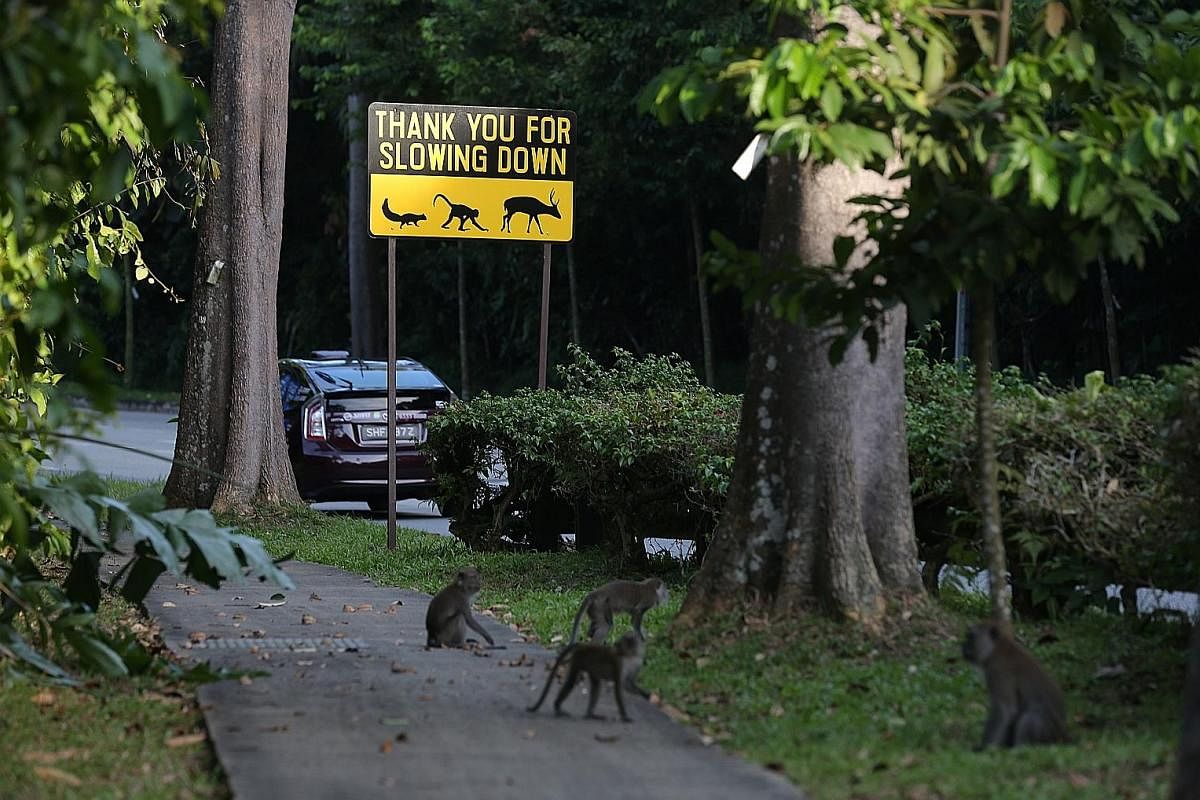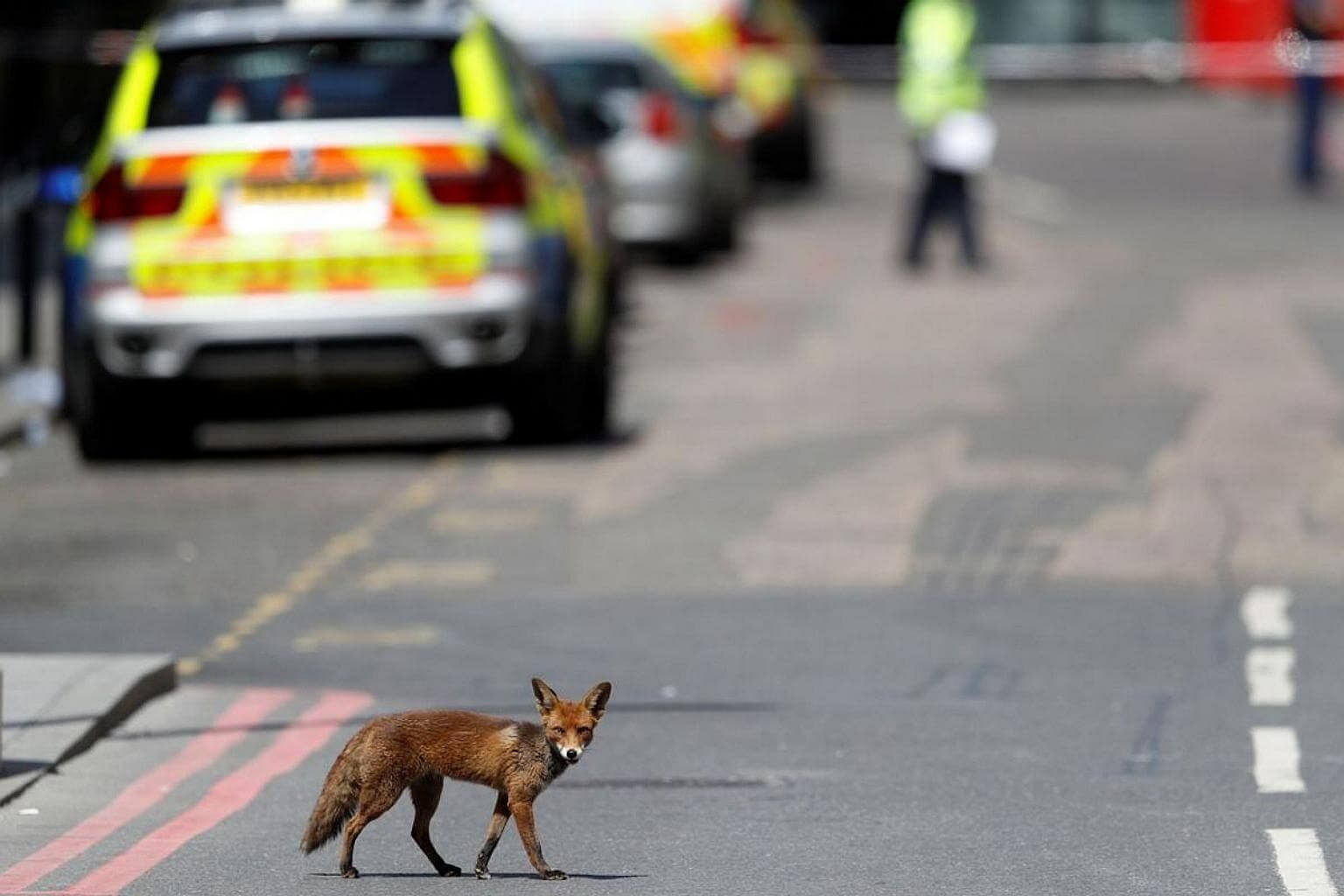Animals in the city
It's a zoo out there: 4 strategies for dealing with animals in public spaces
What are some strategies for dealing with animals in public spaces? Insight looks at four examples from Singapore and overseas.

Animals get protection from traffic hazards in Mandai
The makeover of leafy Mandai is under way and by 2023, visitors will be able to visit five wildlife parks, up from the current three. The new Rainforest Park, and relocated Bird Park from Jurong, will join the existing Singapore Zoo, River Safari and Night Safari.
But even before the nature precinct is fully up and running, developer Mandai Park Holdings (MPH) is taking steps to safeguard native wildlife in the surrounding areas. The measures will also help reduce clashes between humans and animals, such as preventing collisions between vehicles travelling along Mandai Lake Road and wild animals crossing it.
The measures - such as installing speed humps, speed regulating strips and signboards to raise awareness about wildlife crossings - were put in place last November before developmental works began.
The Mandai area sits right outside the Central Catchment Nature Reserve - Singapore's largest nature reserve, and a treasure trove of biodiversity. Animals such as pangolins and plantain squirrels sometimes attempt to cross Mandai Lake Road, which separates fragments of the reserve.
Last November, MPH reduced the speed limit for most parts of Mandai Lake Road to 40kmh, and for the stretches of road near the nature reserve, to 20kmh. The speed limit for the entire stretch of Mandai Lake Road used to be 50kmh.
There are also educational signs along the road to remind drivers to slow down and be alert in case animals cross.
These are interim measures ahead of the completion in 2019 of a wildlife bridge, similar to the one spanning the Bukit Timah Expressway.
Mr Philip Yim, senior vice-president for Mandai Park Development, MPH's developmental arm, says: "This bridge will provide wildlife with a safe passage that protects them from the hazards posed by passing traffic."
He adds: "Fencing strategies will be adopted in the future precinct to guide wildlife to use the bridge."
How England deals with foxes

It seems that the fox is to England what the macaque or wild boar is to Singapore.
Urban foxes in England are carriers of disease, and are known to enter homes and damage gardens. There have also been reports of foxes attacking children, although animal behaviourists there have said such incidents are rare.
The number of urban foxes in England has quadrupled in the past 20 years, according to a study that estimates there are nearly 150,000 in England, or about one for every 300 urban residents, reported The Guardian in April.
But controlling the fox population has proven to be tricky, with people divided on whether foxes should be tolerated or exterminated. Culling, although legal, is controversial. Other than backlash from animal activists, experts have argued that killing one fox merely leaves a vacuum that another would soon fill.
But even as the authorities there grapple with how best to deal with the growing population of these adaptable animals, a charity, the Chartered Institute of Environmental Health, has published online a guide on how households can deal with foxes, with the help of wildlife experts from partner organisations. A key suggestion is for households to reduce the amount of food available to foxes.
This includes storing food waste in fox-proof containers or secure dustbins, not feeding foxes, and ensuring they do not get access to food put out for pets.
The BBC also reported that one of the most popular, and effective, ways of dealing with foxes is the motion-activated sprinkler, which repels the animals with a short but startling burst of water.
Drones used to reduce encounters with sharks

For swimmers or surfers on the beaches of Australia, sharks are not just a nuisance.
Encounters with these creatures can be dangerous, even fatal. In Western Australia, 15 people have been killed by sharks since 2000, according to news reports.
The authorities have tried various measures to prevent further cases, such as by installing shark nets to prevent the predators from encroaching into areas where people swim.
But shark nets under trial in New South Wales ensnared other animals as well, resulting in an outcry from animal conservation groups, which called for the nets to be removed.
ABC News reported in January this year that between 2015 and last year, 133 target sharks were caught along with 615 non-target marine animals off beaches between the cities of Wollongong and Newcastle. Almost half of the animals that were caught perished in the netting.
Now the authorities are turning to technology to reduce encounters between sharks and humans.
Last week, it was announced that new technology in the form of drones will be deployed across beaches in Western Australia to better protect swimmers and surfers.
The drones, equipped with military-grade cameras, will be used to detect sharks. Data will then be transmitted to lifeguards or swimmers instantly.
News site Perth Now reported that unlike human spotters in helicopters, such cameras can "see" sharks on the surface and at depths down to 10m, observe a wider stretch of ocean, and are not hindered by waves or glare.
Resident takes steps to co-exist with macaques

Monkeys visit Mr Russell Ng, 68, nearly every day at his home in Old Upper Thomson Road where he has lived for nine years.
The long-tailed macaques come from the Central Catchment Nature Reserve, which is right across the road from Mr Ng's house.
They scale the walls around his home in search of food left out by people in the residential estate and eateries nearby.
However, the animals do not bother him as he has learnt to co-exist with them.
Initially, they did enter his home and stole food.
But he has learnt not to leave food lying around. It is kept in a microwave oven instead of being left on the table.
Mr Ng also makes it a point to keep trash indoors instead of in the bin outside, until the garbage collector is due.
"Some of our neighbours also use bungee cords to secure their bins, to make it less easy for the macaques to rummage around in," says Mr Ng, who sits on the area's residents' committee.
He has also trained his three dogs, all poodle-crosses, to ignore the macaques.
This helps prevent the macaques from exhibiting confrontational or aggressive behaviour whenever they feel challenged, he says.
"In the past, every time a monkey comes around, the dogs will keep barking. Now, it's like they don't even see the monkeys," says Mr Ng, a retired businessman.
The encounters he has had with the macaques have been fascinating, he adds, and led him to start volunteering as a docent in the zoo, helping out with the primates.
Join ST's WhatsApp Channel and get the latest news and must-reads.
A version of this article appeared in the print edition of The Sunday Times on October 22, 2017, with the headline It's a zoo out there: 4 strategies for dealing with animals in public spaces. Subscribe

